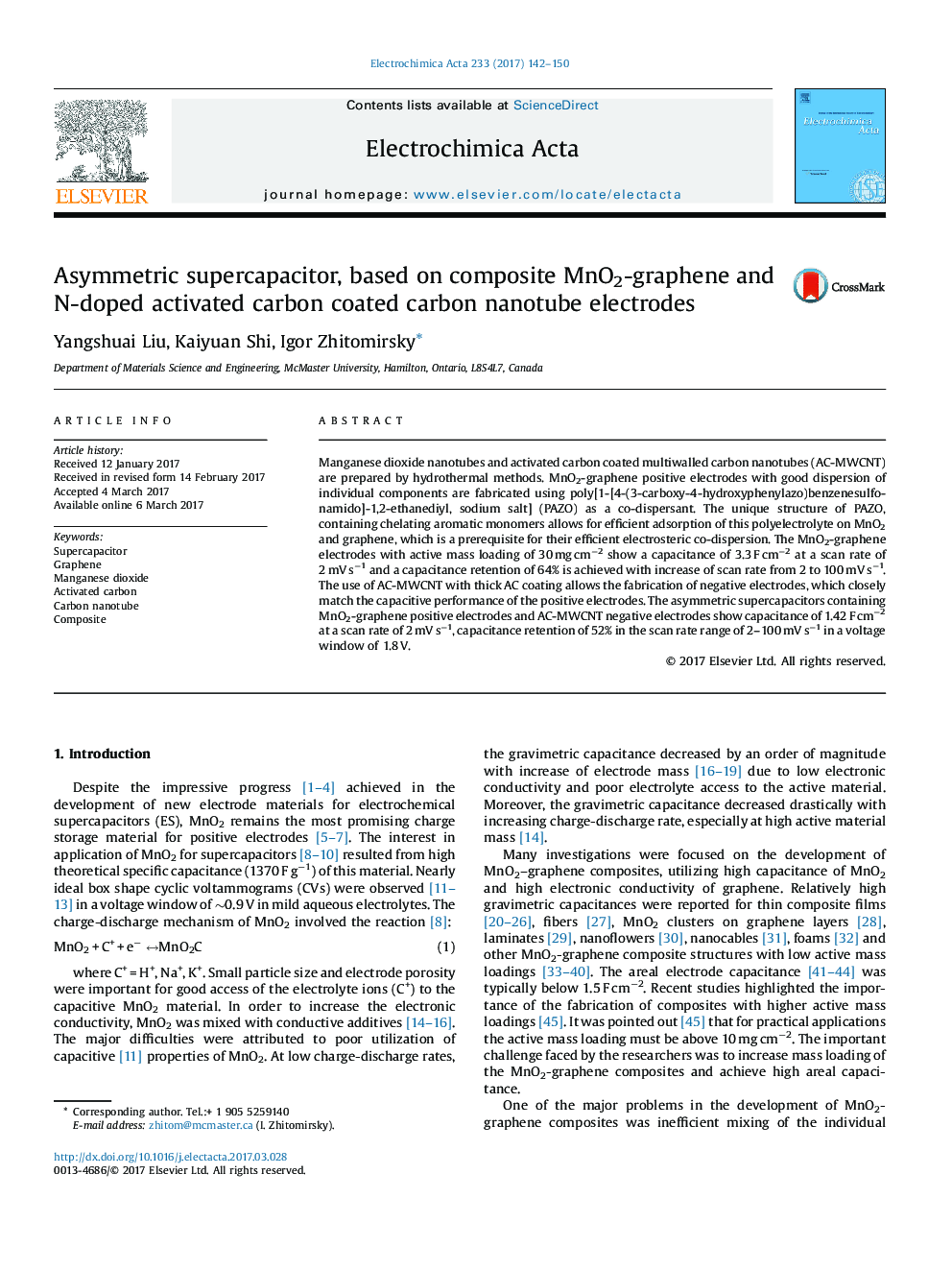| Article ID | Journal | Published Year | Pages | File Type |
|---|---|---|---|---|
| 6471449 | Electrochimica Acta | 2017 | 9 Pages |
â¢MnO2 nanotube-graphene positive electrodes were prepared for supercapacitors.â¢Good co-dispersion was achieved using chelating polyaromatic polyelectrolyte.â¢Activated carbon coated carbon nanotube negative electrodes were prepared.â¢The electrodes showed high capacitance at high active mass loadings.â¢Devices showed high capacitance in a window of 1.8 V and good capacitance retention
Manganese dioxide nanotubes and activated carbon coated multiwalled carbon nanotubes (AC-MWCNT) are prepared by hydrothermal methods. MnO2-graphene positive electrodes with good dispersion of individual components are fabricated using poly[1-[4-(3-carboxy-4-hydroxyphenylazo)benzenesulfonamido]-1,2-ethanediyl, sodium salt] (PAZO) as a co-dispersant. The unique structure of PAZO, containing chelating aromatic monomers allows for efficient adsorption of this polyelectrolyte on MnO2 and graphene, which is a prerequisite for their efficient electrosteric co-dispersion. The MnO2-graphene electrodes with active mass loading of 30 mg cmâ2 show a capacitance of 3.3 F cmâ2 at a scan rate of 2 mV sâ1 and a capacitance retention of 64% is achieved with increase of scan rate from 2 to 100 mV sâ1. The use of AC-MWCNT with thick AC coating allows the fabrication of negative electrodes, which closely match the capacitive performance of the positive electrodes. The asymmetric supercapacitors containing MnO2-graphene positive electrodes and AC-MWCNT negative electrodes show capacitance of 1.42 F cmâ2 at a scan rate of 2 mV sâ1, capacitance retention of 52% in the scan rate range of 2-100 mV sâ1 in a voltage window of 1.8 V.
Graphical abstractDownload high-res image (146KB)Download full-size image
